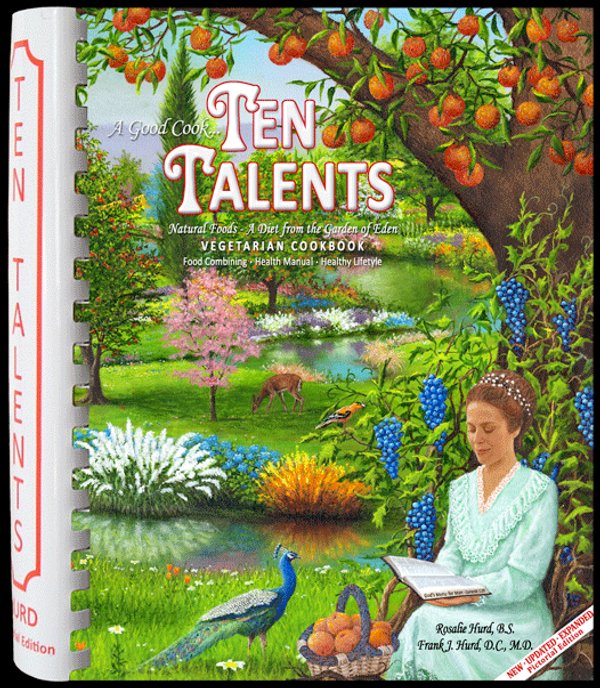I often wonder why the current economic downturn, though it certainly has caused certain useless and paranoid sorts of cultural uproar, has not led to more positive attempts at adaptation like we had in the 1970s. Though the 1970s experimentation with back-to-the-earth movements were mostly eventually abandoned as failures, still those movements changed many people permanently.
The script for these movements, you’ll remember, came from publications that are now classics — the Foxfire books, for example, and the Whole Earth Catalog.
In those days, there was one cookbook that you’d be sure to find in any health food store — the Ten Talents cookbook by Frank and Rosalie Hurd. This cookbook is still in print in a revised edition.
While unboxing books yesterday, I came across my copy of the Ten Talents cookbook. I have the original 1968 edition. It remains the best vegan cookbook I have ever seen.
Another book that was very important in the hippy era was Jethro Kloss’ Back to Eden, which also became a hippy handbook.
These two books — Ten Talents (1968) and Back to Eden (written in the 1930s) — are decades ahead of their time. It is remarkable how they are in accord with all the research that has been done on health, disease, and diet since the books were written.



